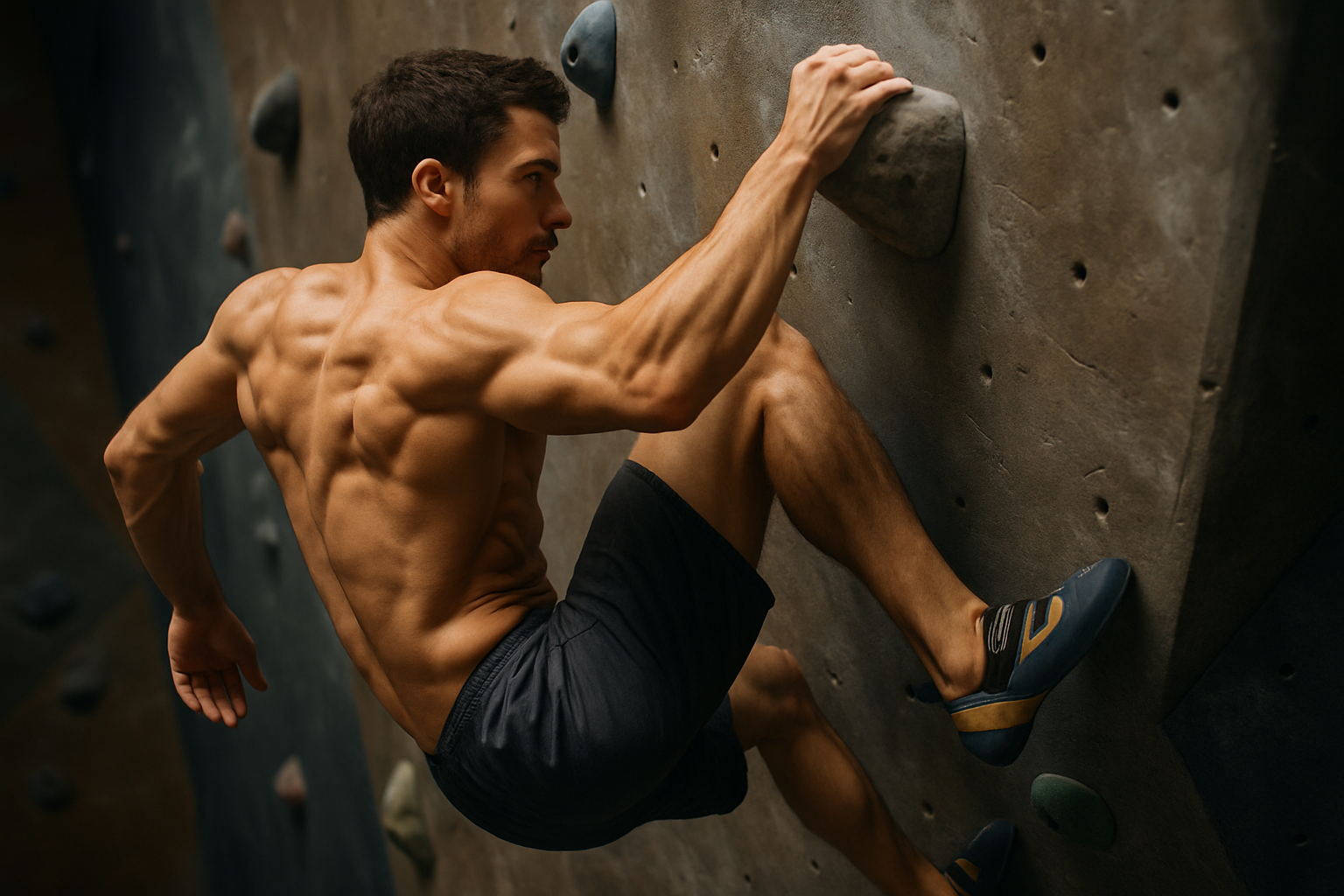Harnessing the Power of Plyometrics in Modern Athletics
In the dynamic world of sports performance, plyometric training has emerged as a game-changer, revolutionizing how athletes prepare for competition. This explosive form of exercise, focusing on rapid muscle contractions and power development, has become an indispensable tool for athletes across various disciplines. From sprinters to basketball players, the impact of plyometrics on speed, agility, and overall athletic prowess is undeniable.

The origins of plyometrics can be traced back to the 1960s in Eastern Europe, where it was initially developed as a training method for track and field athletes. Soviet scientist Yuri Verkhoshansky, often called the “Father of Plyometrics,” pioneered many of the early techniques. He observed that athletes who incorporated jump training into their routines showed significant improvements in power output and overall performance.
As the benefits of plyometric training became evident, its application expanded beyond track and field. By the 1980s, plyometrics had gained popularity in North America, with coaches and trainers integrating these exercises into various sports programs. Today, plyometric training is a staple in the regimens of elite athletes across multiple disciplines, from football to gymnastics.
The Science Behind Plyometric Effectiveness
The effectiveness of plyometric training lies in its ability to enhance neuromuscular efficiency and power production. When an athlete performs a plyometric movement, such as a depth jump, several physiological adaptations occur:
-
Improved Motor Unit Recruitment: Plyometric exercises stimulate a higher number of motor units, increasing the muscle fibers activated during a movement. This leads to greater force production and improved muscle coordination.
-
Enhanced Rate of Force Development: The rapid transition from eccentric to concentric contraction in plyometrics trains the nervous system to initiate muscle contractions more quickly. This results in faster force generation, crucial for explosive movements in sports.
-
Increased Elastic Energy Storage: Regular plyometric training improves the elasticity of tendons and muscles, allowing for greater energy storage during the eccentric phase and more powerful release during the concentric phase.
-
Heightened Proprioception: The dynamic nature of plyometric exercises challenges an athlete’s balance and spatial awareness, leading to improved proprioception and overall body control.
-
Bone Density Improvement: The high-impact nature of many plyometric exercises can contribute to increased bone density, reducing the risk of stress fractures and osteoporosis in athletes.
Research has consistently demonstrated the efficacy of plyometric training. A meta-analysis published in the Journal of Strength and Conditioning Research found that plyometric training significantly improved vertical jump performance, sprint times, and agility in athletes across various sports.
Integrating Plyometrics into Training Programs
While the benefits of plyometrics are clear, proper integration into an athlete’s training program is crucial for maximizing results and minimizing injury risk. Here are key considerations for implementing plyometric training:
-
Progressive Overload: Like any form of training, plyometrics should follow the principle of progressive overload. Begin with low-intensity exercises and gradually increase complexity and volume as the athlete’s capacity improves.
-
Specificity: Tailor plyometric exercises to the specific demands of the athlete’s sport. For example, a basketball player might focus on vertical jump exercises, while a sprinter might prioritize horizontal plyometrics.
-
Recovery and Periodization: Due to the high-intensity nature of plyometrics, adequate recovery time is essential. Incorporate plyometric training into a well-structured periodization plan, considering the athlete’s competition schedule and overall training load.
-
Proper Technique: Emphasize correct form and technique to maximize the benefits and reduce injury risk. This often requires supervision from a qualified coach or trainer, especially for novice athletes.
-
Surface Considerations: Choose appropriate surfaces for plyometric training. While a firm surface is generally preferred for most exercises, softer surfaces may be necessary for higher-impact movements to reduce stress on joints.
-
Age and Experience: Consider the athlete’s age and training experience when designing a plyometric program. Young athletes and beginners should focus on fundamental movement patterns before progressing to more advanced plyometric exercises.
Plyometric Exercises for Different Sports
The versatility of plyometric training allows for its application across a wide range of sports. Here are examples of sport-specific plyometric exercises:
-
Soccer: Box jumps, lateral bounds, and single-leg hops can improve a player’s ability to change direction quickly and generate explosive power for sprinting and jumping.
-
Basketball: Depth jumps, tuck jumps, and medicine ball throws can enhance vertical jump height, rebounding ability, and overall court explosiveness.
-
Tennis: Lateral plyometric exercises, such as side-to-side bounds and split squat jumps, can improve a player’s ability to cover the court and generate power in lateral movements.
-
Swimming: Upper body plyometrics, including medicine ball slams and plyometric push-ups, can enhance a swimmer’s stroke power and explosive starts off the block.
-
American Football: Broad jumps, hurdle hops, and bounding exercises can improve a player’s acceleration, change of direction, and overall explosive power on the field.
-
Volleyball: Repeated vertical jumps, depth jumps, and block jumps can significantly enhance a player’s vertical leap and quick-reaction abilities at the net.
Measuring and Monitoring Plyometric Performance
To ensure the effectiveness of plyometric training and track an athlete’s progress, various measurement tools and techniques can be employed:
-
Vertical Jump Tests: The vertical jump test is a staple in assessing lower body power. Devices like the Vertec or force plates can provide accurate measurements of jump height and power output.
-
Hop Tests: Single-leg hop tests for distance or time can evaluate an athlete’s unilateral power and stability, crucial for sports involving rapid direction changes.
-
Reactive Strength Index (RSI): This measure assesses an athlete’s ability to quickly transition from eccentric to concentric contractions. It’s particularly useful for evaluating the effectiveness of depth jumps and other reactive plyometric exercises.
-
Sprint Tests: Timed sprints over short distances (10-40 meters) can indicate improvements in acceleration and power development resulting from plyometric training.
-
Force Plate Analysis: Advanced force plate technology can provide detailed data on ground reaction forces, rate of force development, and power output during plyometric movements.
-
Video Analysis: Slow-motion video analysis can help coaches and athletes assess technique and identify areas for improvement in plyometric exercises.
Regular assessment using these tools allows for data-driven adjustments to plyometric training programs, ensuring optimal progression and performance gains.
Injury Prevention and Risk Management in Plyometric Training
While plyometric training offers significant performance benefits, it also carries inherent risks due to its high-impact nature. Implementing proper injury prevention strategies is crucial for long-term athletic development:
-
Thorough Warm-up: A comprehensive warm-up routine, including dynamic stretching and low-intensity plyometric drills, prepares the body for the demands of high-intensity jumping exercises.
-
Proper Landing Mechanics: Emphasize soft landings with proper knee and hip alignment to reduce joint stress. Teaching athletes to “land like a feather” can significantly decrease impact forces.
-
Gradual Progression: Start with low-impact exercises and gradually increase intensity and volume. This allows the musculoskeletal system to adapt to the demands of plyometric training.
-
Strength Foundation: Ensure athletes have an adequate strength base before introducing high-intensity plyometrics. A general guideline is the ability to perform a 1.5 times bodyweight squat before progressing to advanced plyometric exercises.
-
Proper Footwear and Surfaces: Use appropriate footwear with good cushioning and stability. Choose surfaces that provide some shock absorption while still allowing for reactive movements.
-
Monitoring Fatigue: Pay close attention to signs of fatigue during plyometric sessions. Quality of movement should always take precedence over quantity.
-
Balanced Training Program: Integrate plyometrics into a well-rounded training program that includes strength training, flexibility work, and sport-specific skills practice.
-
Individual Considerations: Take into account an athlete’s injury history, biomechanics, and physical readiness when designing plyometric programs.
By prioritizing these injury prevention strategies, coaches and athletes can maximize the benefits of plyometric training while minimizing the risk of overuse injuries or acute trauma.
The Future of Plyometric Training
As sports science continues to evolve, so too does our understanding and application of plyometric training. Several emerging trends and areas of research are shaping the future of this training modality:
-
Individualized Plyometric Programming: Advanced analytics and wearable technology are enabling more personalized plyometric programs tailored to an athlete’s specific needs, recovery rates, and performance goals.
-
Integration with Virtual Reality: Virtual reality (VR) systems are being developed to create immersive plyometric training experiences, allowing athletes to practice complex movements in simulated game scenarios.
-
Ecological Dynamics Approach: This approach emphasizes designing plyometric exercises that more closely mimic the unpredictable nature of sports, improving transfer to real-game situations.
-
Neuromuscular Electrical Stimulation (NMES): Research is exploring the combination of NMES with plyometric training to enhance muscle activation and power development.
-
Genetic Profiling: Advances in genetic testing may soon allow for plyometric programs to be tailored based on an individual’s genetic predisposition for power development and injury risk.
-
Altitude Training Integration: Some elite training centers are experimenting with performing plyometric exercises in altitude chambers to potentially enhance adaptations.
-
Rehabilitation Applications: Plyometric training is increasingly being used in rehabilitation settings, with modified exercises helping athletes recover from injuries and regain explosive power.
As these trends develop, the application of plyometric training is likely to become even more sophisticated and effective in enhancing athletic performance across a wide range of sports.
Plyometrics in Youth Athletics
The use of plyometric training in youth sports has been a topic of considerable debate and research in recent years. While there are clear benefits to introducing young athletes to power development exercises, there are also important considerations to ensure safe and effective implementation:
-
Age-Appropriate Programming: The American Academy of Pediatrics recommends that children can begin plyometric training around the age of 8, provided they have good balance and posture control. However, the intensity and volume should be carefully monitored and increased gradually.
-
Emphasizing Technique: For young athletes, the focus should be on developing proper technique and movement patterns rather than maximizing power output. This lays the foundation for more advanced plyometric training in later years.
-
Incorporating Fun and Variability: Plyometric exercises for youth should be engaging and varied to maintain interest and promote overall athletic development. Games and challenges that incorporate plyometric movements can be particularly effective.
-
Monitoring Growth Spurts: During periods of rapid growth, young athletes may experience temporary decreases in coordination and increased risk of injury. Plyometric training should be adjusted accordingly during these phases.
-
Long-Term Athletic Development: Plyometric training should be part of a broader long-term athletic development program that includes fundamental movement skills, strength training, and sport-specific practice.
-
Education on Recovery: Teaching young athletes about the importance of proper nutrition, hydration, and rest is crucial when introducing more intense training methods like plyometrics.
-
Psychological Considerations: Plyometric training can be challenging and may lead to temporary performance plateaus. It’s important to manage expectations and maintain a positive, growth-oriented mindset in young athletes.
Research has shown that when implemented correctly, plyometric training can be safe and beneficial for young athletes. A study published in the Journal of Strength and Conditioning Research found that a 6-week plyometric training program improved jumping and sprinting performance in pre-pubertal soccer players without increasing injury risk.
Plyometrics for Endurance Athletes
While plyometric training is often associated with power and speed sports, its benefits extend to endurance athletes as well. Incorporating plyometrics into endurance training programs can lead to significant improvements in performance:
-
Running Economy: Plyometric exercises can improve running economy by enhancing the elastic properties of muscles and tendons. This leads to more efficient energy storage and return during each stride, potentially reducing the energy cost of running.
-
Power Development: Even in endurance events, there are moments that require bursts of power, such as sprint finishes or hill climbs. Plyometric training can improve an athlete’s ability to generate force quickly in these situations.
-
Injury Prevention: By strengthening tendons and improving neuromuscular coordination, plyometrics can help reduce the risk of common overuse injuries in endurance athletes.
-
Stride Length and Frequency: Plyometric drills can help runners improve both stride length and frequency, leading to faster overall running speeds.
-
Core Stability: Many plyometric exercises engage the core muscles, improving overall stability and posture during endurance activities.
-
Bone Density: The high-impact nature of plyometrics can help combat the potential bone density loss associated with high-volume endurance training.
When incorporating plyometrics into endurance training programs, it’s important to consider the overall training load and periodization. Plyometric sessions should be scheduled to allow for adequate recovery and not interfere with key endurance workouts.
Plyometrics in Team Sports
Team sports present unique challenges and opportunities for plyometric training. The need for quick accelerations, rapid changes of direction, and explosive movements makes plyometrics particularly valuable in these contexts:
-
Sport-Specific Plyometrics: Designing plyometric exercises that mimic the movement patterns of specific sports can enhance transfer to game situations. For example, basketball players might focus on reactive vertical jumps, while soccer players might emphasize multidirectional bounds.
-
Position-Specific Training: Within team sports, different positions often require different types of explosive movements. Tailoring plyometric programs to positional demands can optimize performance gains.
-
Reactive Agility: Incorporating decision-making elements into plyometric drills can improve an athlete’s ability to react quickly to unpredictable game situations.
-
Power Endurance: For sports with repeated explosive actions, such as volleyball or basketball, plyometric circuits can be designed to improve power endurance throughout a match.
-
Team-Based Exercises: Incorporating plyometrics into team drills or competitions can enhance motivation and simulate game-like intensity.
-
In-Season Maintenance: During the competitive season, lower-volume, high-quality plyometric sessions can help maintain power and explosiveness without overtaxing athletes.
-
Recovery Considerations: In team sports with frequent competitions, careful planning is needed to ensure plyometric training doesn’t interfere with game recovery or preparation.
Coaches working with team sports must balance the needs of individual athletes with the collective goals of the team when implementing plyometric training programs.
The Role of Nutrition in Supporting Plyometric Training
Proper nutrition plays a crucial role in maximizing the benefits of plyometric training and supporting recovery. Key nutritional considerations include:
-
Protein Intake: Adequate protein consumption is essential for muscle repair and growth following high-intensity plyometric sessions. A general guideline is 1.6-2.2 grams of protein per kilogram of body weight per day for athletes engaged in intense training.
-
Carbohydrate Timing: Consuming carbohydrates before and after plyometric training can help maintain energy levels and support recovery. Complex carbohydrates are preferable for sustained energy release.
-
Hydration: Proper hydration is critical for performance and recovery in plyometric training. Athletes should aim to start sessions well-hydrated and replace fluids lost during exercise.
-
Antioxidants: The high-intensity nature of plyometrics can increase oxidative stress. A diet rich in antioxidants from fruits and vegetables can help combat this stress and support recovery.
-
Omega-3 Fatty Acids: These essential fats have anti-inflammatory properties that may help reduce muscle soreness and support joint health, which is particularly important in high-impact plyometric training.
-
Micronutrients: Ensuring adequate intake of vitamins and minerals, particularly calcium and vitamin D for bone health, is crucial for athletes engaging in high-impact plyometric exercises.
-
Timing of Meals: Consuming a balanced meal containing carbohydrates and protein within 30 minutes to 2 hours after a plyometric session can enhance recovery and adaptation.
-
Supplements: While whole foods should form the basis of an athlete’s diet, certain supplements like creatine monohydrate have been shown to enhance power output and may be beneficial for athletes engaged in regular plyometric training.
Athletes should work with sports nutritionists to develop personalized nutrition plans that support their plyometric training and overall performance goals.
Plyometrics in Rehabilitation and Return-to-Play Protocols
Plyometric exercises are increasingly being incorporated into rehabilitation programs and return-to-play protocols. When used appropriately, plyometrics can play a valuable role in restoring function and confidence following injury:
-
Gradual Progression: In rehabilitation settings, plyometric exercises are introduced gradually, starting with low-intensity movements and progressing as the patient’s strength and control improve.
-
Neuromuscular Re-education: Plyometric drills can





